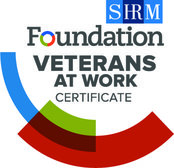Incurred Cost Submissions: DIY or Do It Well?
Editor’s Note: This Article Has Been Updated June 14, 2023
While Tax Season may be the bell of the ball for the average American, in the GovCon space the real sweetheart is the Incurred Cost Submission. The question on our client’s minds is: Can you DIY the ICS with some turbo-tax-type setup, or does it need to be carefully placed into the hands of a professional? Keeping that in mind, let’s discuss:
Incurred Cost Submission Must-Knows
Filing Deadline: Your incurred cost submission (ICS) must be filed 6 months after the close of your fiscal year. For many, that’s June 30th. Though that may seem far from today, the amount of QA (which we’ll get to shortly) necessary to facilitate and close this filing leaves little wiggle room.
Schedule H Detail: Providing minimal detail or justification for costs isn’t going to cut it here. We typically say that with the government, ignorance isn’t an excuse, and with your incurred cost submission (ICS) that holds true. You’ll need to provide adequate reasoning for the costs as they pertain to each line item on your submission.
Running Reports Isn’t Enough: The running of the report is step one in the process. From there you’ll need to match and checkpoint contact, accounting, and contract data (to include task order changes) to ensure that everything matches and balances. This is where the bulk of your time will be spent, and it is also why we harp on having your processes, filing, and organization in place for future needs.
The DIY Approach
If you’re planning to DIY (Do-ICS-Yourself) you’ll need to begin gathering your data ASAP. Is it possible to DIY the ICS? Absolutely. Do you have the dedicated time and attention to get it right? That’s up to you. When it comes to the mathematically minded let’s put this to a quick equation:
Your Time Per Week
Contract and Client Deliverable Time + ICS Prep Time + BD Time
If we’re looking at a negative number, or one that robs you of sleep, DIY may not be your best bet. If you’re set on the DIY method here are some of the things you’ll need to remember:
• Know the DCAA Workbook (ICE) and Requirements well (No, this isn’t an optional filing)
• Match schedules to unlinked data
• Categorize for Schedule H
• Include and complete all mandatory schedules
• Include appropriate wage accounts
• All Policy Documents Readily available (Accounting Policies, Bonus Policy, Labor & Timekeeping, etc.)
• Have direct access to task orders and contracts, and correct figures for all schedules
• Run your report
• Set aside time to double and triple check the data outputs
• Check the DCAA Adequate Checklist
How To Do It Well
If the DIY method looks too overwhelming, we have a suggestion. This should come as no surprise, but you may want to pass the ball to an outsourced option that can help you to prepare for submitting your report. An outsourced team will have fresh eyes to compile, prepare, and check your submission prior to crunch time. The goal here is to provide your incurred cost submission (ICS) in a way that the DCAA will deem it “adequate” AND low risk to avoid an audit. While most preparation services cannot guarantee these ratings and future audit avoidance, having your DCAA ducks in a row will definitely give you an educated leg up in the pool.
BOOST can help prepare your Incurred Cost Submissions with a keen eye for detail and reporting. If you’d like to learn more about our GovCon accounting services, schedule a chat here.
About BOOST’s CEO, Stephanie Alexander
Stephanie Alexander has spent more decades than she wants to admit supporting high growth government contractors with an eye towards their bottom line. She is the CEO and founder of BOOST LLC which supports back-office functions for government contractors. She is a co-founder and Partner at govmates, a free teaming platform and technology scouting tool to connect businesses across the federal landscape.
















